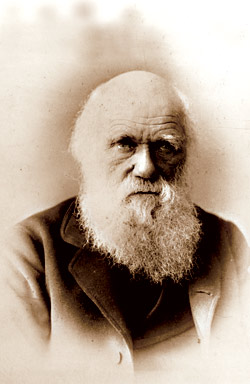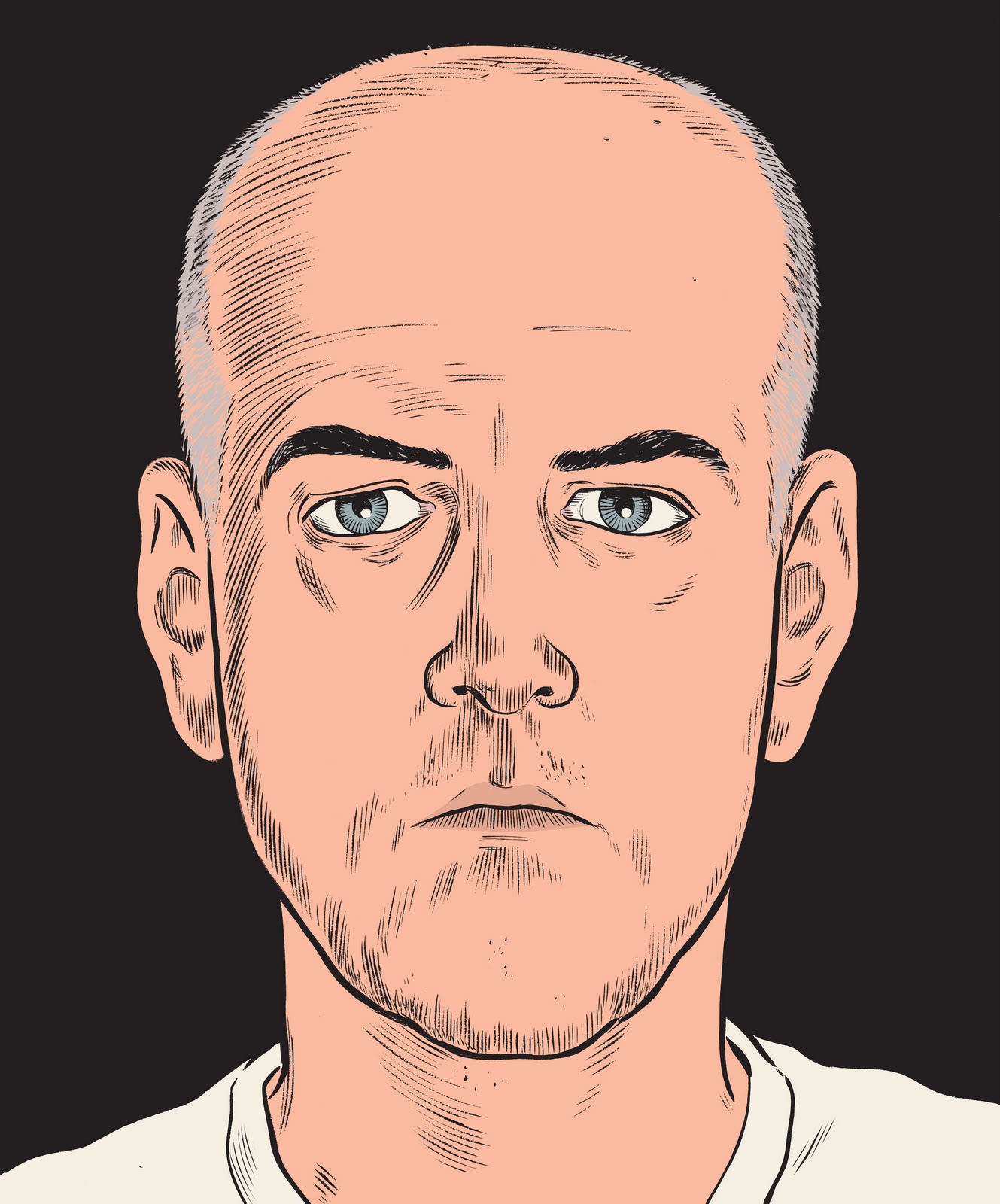In 1998, members of a Seattle nonprofit think tank drafted a secret five-year plan with an ambitious goal: to “defeat scientific materialism” and “replace materialistic explanations with the theistic understanding that nature and human beings are created by God.”
By the end of the stated five-year period, the benevolent conspirators had seen much of their goal accomplished. There was widespread public debate with materialist Darwinists. Dozens of books had been published presenting a non-Darwinian alternative theory of life. There was widespread respectful press coverage of their cause, with innumerable supportive op-ed columns in mainstream media, cover stories in the national newsweeklies, and even a widely broadcast PBS documentary. School authorities in 10 states were looking into adopting some or all of the recommendations for high-school science curricula. So well was the campaign going that in 2004, some of the original antimaterialism advocates were confident enough of eventual triumph to predict in detail a complete meltdown of Darwinian science by 2025—the 100th anniversary of the notorious “Monkey Trial” of 1925.
However unlikely their optimism at the time, it looks a great deal more unlikely today. In December, a federal judge presiding over another case of Darwin versus faith in a public-school system handed the antimaterialists a defeat so sweeping—in the form of a judicial decision so detailed and so trenchant—that even the most passionate advocates of faith-based science seem stunned and confused about the future of their cause. They’ll be back. But in this time of their momentary disarray, it seems appropriate to look back over the short but rocketlike rise to media celebrity of the idea called “intelligent design” and the small, dedicated band of true believers who sold the concept to the wider world.
The story begins, so far as the world at large is concerned, on a late January day seven years ago, in a mail room in a downtown Seattle office of an international human-resources firm. The mail room was also the copy center, and a part-time employee named Matt Duss was handed a document to copy. It was not at all the kind of desperately dull personnel-processing document Duss was used to feeding through the machine. For one thing, it bore the rubber-stamped warnings “TOP SECRET” and “NOT FOR DISTRIBUTION.” Its cover bore an ominous pyramidal diagram superimposed on a fuzzy reproduction of Michelangelo’s Sistine Chapel rendition of God the Father zapping life into Adam, all under a mysterious title: The Wedge.
Curious, Duss rifled through the 10 or so pages, eyebrows rising ever higher, then proceeded to execute his commission while reserving a copy of the treatise for himself. Within a week, he had shared his find with a friend who shared his interest in questions of evolution, ideology, and the propagation of ideas. Unlike Duss, the friend, Tim Rhodes, was technically savvy, and it took him little time to scan the document and post it to the World Wide Web, where it first appeared on Feb. 5, 1999.
The unnamed author of the document wasted no time getting down to his subject. “The proposition that human beings are created in the image of God is one of the bedrock principles on which Western civilization was built. Yet little over a century ago, this cardinal idea came under wholesale attack by intellectuals drawing on the discoveries of modern science.” Such thinkers as Karl Marx, Sigmund Freud, and, above all, Charles Darwin promulgated a “materialistic conception of reality” that “eventually infected virtually every area of our culture, from politics and economics to literature and music.”
Not content with bewailing the intelligentsia’s falling away from faith, the author proposed to do something about it. “Discovery Institute’s Center for the Renewal of Science and Culture seeks nothing less than the overthrow of materialism and its damning cultural legacies,” he wrote. He went on to detail a 20-year plan to replace “materialistic explanations with the theistic understanding that nature and human beings are created by God,” and to replace materialist science with a new scientific paradigm “consonant with Christian and theistic convictions.”
The immediate impact of the posting of The Wedge on the Web was almost nil. The Internet was far from being the instant echo chamber of news and ideas it’s since become. (On Feb. 7, 1999, Google had all of eight employees.) Outside Seattle, hardly anyone had heard of the Discovery Institute, let alone its Center for the Renewal of Science and Culture. By last year, Seattle’s DI and the center were internationally known as the world’s most respectable and most talked-about and quoted resource for the new brand of “science” called intelligent design.
In retrospect, the successful campaign to disseminate intelligent-design theory is all the more astonishing because it was achieved with remarkably modest resources and promoted by a tiny cadre. The American scientific establishment has billions of dollars annually to promote programs; the Discovery Institute’s overall budget has never much exceeded $4 million annually, and much of an increase in recent years is due to a near–$10 million grant to study local transportation issues, not biology or education. Yet until the decision this past December in the case of Kitzmiller et al. v. Dover School District, the Discovery Institute’s pro-intelligent-design slogan “teach the controversy” seemed to be overtaking Nike’s “just do it” as the most successful sales mantra ever to come from the great Northwest. “Considering that they did it with very few people, very little money, and no established power base, it’s far and away the most successful campaign of its kind I’ve ever seen,” says Philip Gold, a former Discovery fellow.

Founded by an out-of-office politician named Bruce Chapman, Discovery grew out of a short-lived Seattle branch office of Indianapolis’ Hudson Institute, a 40-year-old conservative think tank founded by Cold War theorist Herman Kahn. For most of its existence, Discovery Institute occupied a dumpy office suite in an old- fashioned downtown Seattle office block. Discovery’s first outings into the public-policy arena were very much in the spirit of the long-standing goals of Seattle’s reigning political establishment: good government, strict law enforcement, conservative fiscal policy, and a forward-looking transit system for the increasingly congested Puget Sound basin.
But if he didn’t know already, Chapman soon learned that a think tank, particularly a brand-new one, has to trim its sails to the winds it encounters if it’s to reach any harbor at all. Times had changed since the 1970s, when he and his East Coast coterie arrived to energize the sleepy, clubby Seattle political scene. The liberal Republican issues that had proved so effective 20 years before had lost their sizzle.
Chapman’s own convictions had changed, as well. His stint inside the Beltway, as director of the Census and working for Reagan policy chief Edwin Meese, had exposed him to tough-minded, right-leaning ideologues and brought him intoxicatingly close to the centers of power. Finding no post of comparable responsibility open to him under the less-ideological presidency of George H.W. Bush, Chapman returned to the relatively brackish pond of Seattle. He was a considerably more doctrinaire conservative than when he departed.
“I think he had a hard time at first,” says David Brewster, founder of Seattle Weekly and an ally during Chapman’s Seattle City Council days. “He’d developed a taste for serious politics, and the issues that interested us in Seattle must have seemed pretty small potatoes. He’d gotten more serious about his religion, and that doesn’t play very well in this town. Plus, he’d lost touch with his circle of friends and colleagues here, who had all gone off in their own various directions. He found himself with no ready-made base and had to build one for himself.”
First Hudson, then Discovery provided Chapman with a platform, but it was not until 1994 that he found both a big defining issue to lend Discovery a distinct identity and the means to push it vigorously. Introduced to the idea of intelligent design by a young philosophy professor named Stephen C. Meyer, Chapman realized that this new approach to re-establishing spiritual values in the search for scientific knowledge not only spoke to his own needs and those of many others but offered access to some serious money if he could persuade the purse holders that he and his institute could do something to further their mutual goals.
By 1995, Chapman and an old friend, college roommate, and Discovery board member, George Gilder, were negotiating with the ultraconservative Ahmanson family of Southern California for a substantial grant to set up a program within Discovery Institute to promote intelligent design as a way to break Darwin’s seemingly unbreakable lock on science education in America. Once again, Meyer was of crucial assistance; he’d worked as a science tutor to one of the Ahmanson children. Gilder and Chapman left Los Angeles with a pledge of a quarter-million dollars a year for three years, and the Center for the Renewal of Science and Culture was born.
The center’s first and so far only director was Meyer, who formerly worked in the Department of Theology, Philosophy, and Chaplain Services at Whitworth College in Spokane, a 115-year-old private liberal-arts college whose mission is “to provide its diverse student body an education of the mind and heart, equipping its graduates to honor God, follow Christ, and serve humanity.” To this end, the mission statement continues, “Whitworth’s community of teacher-scholars is committed to rigorous and open intellectual inquiry and to the integration of Christian faith and learning.”
With stable funding in hand, the center set about recruiting “fellows” to pursue goals of supporting research by scientists and other scholars. Among the goals in the center’s founding document: “challenging various aspects of neo-Darwinian theory”; “developing the scientific theory known as intelligent design”; “exploring the impact of scientific materialism on culture”; and encouraging “schools to improve science education by teaching students more fully about the theory of evolution, including the theory’s scientific weaknesses as well as its strengths.”
The roster of fellows has grown apace over the past 10 years and numbers 44 now (only one of them female). The Web site of the Center for Science and Culture, as it is known now (www.discovery.org/csc), describes the list of fellows as “including biologists, biochemists, chemists, physicists, philosophers and historians of science, and public policy and legal experts, many of whom also have affiliations with colleges and universities.” This list avoids mentioning that only seven fellows hold advanced degrees in biological sciences, while 13 profess philosophy and/or theology at such religiously oriented institutions of higher learning as Biola College in Los Angeles, Messiah College of Gratham, Pa., and Billy Graham’s alma mater, Wheaton College, in Wheaton, Ill.
With such a roster, very little of the center’s research into the weaknesses of Darwinism has been of the experimental, lab-oriented, peer-reviewed kind. Instead, in books, publications, and interviews, it has hewed to a tightly focused message: Intelligent design is not dogmatically antiscience, or even antievolution; on the contrary, it is an attack on dogma, on the stifling orthodoxy of modern Darwinism. Pointing out Darwin’s ideological and evidential feet of clay is only part of the larger mission to open the scientific discourse to evidence and viewpoints that have been suppressed, even persecuted, by the Darwinian establishment. All we ask, the fellows have trumpeted again and again, is the opportunity to make our case, to see our evidence given equal time and exposure with Darwinism, in the media, in the academy—and in the schools.
In parallel with a mission of training the media to take it seriously, the Center for Science and Culture from the beginning had been looking for local school districts and state boards of education that might be sympathetic to the campaign. It struck gold near home in 1999. School authorities (and parents) in Skagit County’s Burlington-Edison School District discovered that for going on 10 years, one of its high- school science teachers, Roger DeHart, had routinely been omitting part of the state-approved biology textbook to make room for his selected readings on evolution, most notably a little book called Of Pandas and People. It is devoted to highlighting questions unanswered by mainstream Darwinism and suggesting that the new science of intelligent design might provide answers.
Some district parents, then the American Civil Liberties Union, began threatening legal action against what they claimed was a veiled intrusion of religious teaching into the classroom. DeHart found himself with some parents on his side, but the decisive support came from the Discovery Institute, which announced to the world that the Darwinian establishment was interfering with a teacher’s academic freedom. After a two-year tug-of-war, DeHart quit to continue the struggle in other ways as a Discovery Institute–subsidized martyr and witness to the intelligent-design cause. (He was still at it as recently as last May, testifying about his ordeal to a sympathetic committee of the Kansas State Board of Education, which was then looking into making intelligent design part of that state’s high-school curriculum.)
Across the country, Discovery Institute fellows offered expert testimony in public and strategic advice in private. As the front widened, the message was honed for maximum acceptability.
Across the country, Discovery Institute fellows offered expert testimony in public and strategic advice in private: Texas, Kansas, Ohio, Wisconsin, Minnesota, Missouri, Montana, California. As the front widened, the message was honed for maximum acceptability. Although the founding documents of intelligent design proclaimed an intention of replacing Darwinian materialism with a new God-centered, faith-based science, the public pitch was much more moderate. As opponents of intelligent design scrambled to hone their own message, advocates ceased to insist even that their brand of biology be taught. Instead, the new mantra became “teach the controversy.” Inform teachers and students that an alternative to Darwin existed, refer them to appropriate textbooks and other readings, and let them make up their own minds. Surely no civil libertarian could object to such an open invitation to debate.
Indeed, as more and more school boards seriously took up consideration of intelligent-design programs, the Discovery Institute became concerned that some of the people they were trying to influence might grow so enthusiastic as to push the newly moderate ideological envelope. They professed no knowledge of the origins of the Center for the Renewal of Science and Culture’s founding Wedge document. They also dropped the loaded word “renewal” from the name and ceased demanding that intelligent design replace Darwinism in the high-school curriculum, or that it even be actively taught there. All that was asked now was that students be apprised that there was a controversy.
That was apparently all that was in question when, in late 2004, a district school board in a small suburb of York, Pa., voted 6-3 that high-school students “will be made aware of gaps/problems in Darwin’s theory and of other theories of evolution including, but not limited to, intelligent design.” A month later, the board mandated that starting in January 2005, ninth-grade biology teachers would be required to read to their students a four-paragraph statement encouraging students to look into alternatives to Darwin and suggesting Of Pandas and People (available in the school library) as a good place to start.
Even though the new policy did not include active teaching of intelligent-design theory, Discovery Institute fellows issued a warning that the policy went too far and might, in fact, damage the cause rather than further it. Little did they know how damaging it would be. On Dec. 14, 2004, a district parent opposed to the new policy filed suit in federal court to block it. Tammy J. Kitzmiller and 11 other parents were represented in their suit against the Dover Area School District by 13 lawyers from the ACLU, the Americans United for Separation of Church and State, and the National Center for Science Education. Against this legal lineup, the constitutional-law equivalent of the Pittsburgh Steelers offensive line, were the Dover board’s defenders, fielded by the conservative Thomas More Law Center of Ann Arbor, Mich.
Considering that the Center for Science and Culture had publicly opposed making the situation in Dover a test case, it seems curious that two of the Discovery Institute’s most prominent fellows signed on to testify at the trial as expert witnesses: Lehigh University biochemist Michael J. Behe and University of Idaho microbiologist Scott Minnich. But testify they did, and it was their testimony, more than that of many experts fielded by the plaintiffs, that left the scientific credentials of intelligent design in tatters.
Behe’s day in court began placidly enough, as More Law Center attorney Robert Muise established his scientific credentials, then coached him through a recital of numerous now-discarded theories once widely believed by reputable scientists—that the sun rotates around the Earth, that light travels through space as vibrations in an invisible ether—to suggest that Darwin’s version of evolution might soon be due to join them. Behe also quoted a formidable list of well-known biologists—Steven Jay Gould, Francis Crick, even super-Darwinist Richard Dawkins—as stating that there were problems with Darwinism as currently formulated. At the same time, Behe modestly suggested that intelligent design, at least as formulated in his book, Darwin’s Black Box, provides a simpler, more reasonable view of how living things came to be the way they are: Someone (or something) with a purpose designed them that way.
Almost as soon as Eric Rothschild began his cross-examination, Behe’s cultivated scientific calm began to crumble. Rothschild baited him like a picador, dashing in, planting a barb, turning away to attack from a new direction before his victim realized it. Hour by hour, Rothschild got Behe to admit:
- That no peer-reviewed scientific journal has published research supportive of intelligent design’s claims.
- That Behe’s own book was not, as he had claimed, peer reviewed.
- That Behe himself criticizes the science presented as supporting intelligent design in instructional material created for that purpose.
- That intelligent design seems plausible and reasonable to inquirers in direct proportion to their belief or nonbelief in God.
- And that the basic arguments for evidence of purposeful design in nature are essentially the same as those adduced by the Christian apologist Rev. William Paley (1743–1805) in his 1802 Natural Theology: or, Evidences of the Existence and Attributes of the Deity, Collected From the Appearances of Nature, where he sums up his observations of the complexity of life in the ringing words, “The marks of design are too strong to be got over. Design must have had a designer. That designer must have been a person. That person is GOD.”
In the last testimony of the Dover trial, Discovery Institute fellow Minnich presented a low-key, engineer’s approach to intelligent design but ended up just as ideologically pummeled in cross-examination by plaintiff’s attorney Steven Harvey.

In the decision handed down on Dec. 20, 2005, U.S. District Judge John E. Jones III, appointed to the federal bench in 2002 by George W. Bush, refers frequently to inconsistencies and equivocations in Behe’s testimony, primarily in reference to this question: How does intelligent design differ in any significant way from earlier attempts to avoid conflict with the First Amendment prohibition of state-supported or countenanced religion? Judge Jones’ answer: Not enough to distinguish it in law from the various versions of creationism already banned from the schools by a series of unequivocal U.S. Supreme Court decisions beginning in 1968.
Intelligent design, said the judge, is creationism with a scientific veneer. Advocates contend that nature offers any reasonable observer evidence of purposeful design while refusing to offer an opinion on who or what that designer might have been. On the contrary, said the judge, the evidence presented in the case should suffice to persuade any reasonable observer that the purpose of intelligent design is to slip God back into the classroom through the transparent device of refusing to mention his name. The Dover School Board’s intelligent-design policy is unconstitutional. The board will pay all costs of the plaintiffs. Case closed.
The evidence, said the judge, should persuade a reasonable person that the purpose of intelligent design is to slip God into the classroom through the transparent device of refusing to mention his name.
By the time the holidays had passed, the stunned silence following the court’s decision was followed by a fusillade of attacks from Discovery Institute personnel, including Bruce Chapman himself, who appeared on a Salem Radio Network talk show to denounce the judge as a “judicial activist” and his decision as an example of unwarranted judicial intrusion into academic freedom—a concept now stood on its head to protect the rights of outsiders to dictate educational policy to teachers rather than the other way around.
One point made over and over by the losing side in Dover is that the decision has the force of law only in the middle of Pennsylvania’s three federal judicial districts; therefore, intelligent design still has a clean bill of health in all the other areas of the country where advocates have brought it to the attention of school authorities. There are a lot of them. School districts and/or state boards of education in Texas, Kansas, Ohio, Wisconsin, Minnesota, Missouri, Montana, and California have given intelligent design some level of approval in their curricular guidelines.
In reality, Judge Jones’ decision should give a strong warning to anyone thinking of ignoring its provisions. Though it is “law” only in mid-Pennsylvania, the decision is so thorough and detailed in citation of constitutional precedent that most other courts would be likely to pay a great deal of attention to it, rather than attempting to reinvent the wheel. Other such midlevel decisions have proved decisive in earlier creationism cases: McLean v. Arkansas Board of Education technically applies only to the eastern district of Arkansas, but the Supreme Court has cited it approvingly in decisions on church-state issues.
There is also a financial impact in Jones’ decision. School districts and state boards may not want to embark on a fight over intelligent design if there’s a chance that, as in Pennsylvania, they might find themselves liable for millions of dollars in court and lawyer costs. There are already rumors that cooler heads are prevailing in some of the ongoing state disputes.
For local observers of the evolution wars, perhaps the most interesting aftereffect of the Dover bring-down is: What will the long-term impact on the Discovery Institute be? A number of former contributors have already cut back or eliminated support. The Bill and Melinda Gates Foundation, which has pledged nearly $1 million a year for 10 years to the transportation arm of the institute, is known to be both uncomfortable with the adverse publicity that’s come its way through funding an anti-Darwin organization and concerned that some of the funds earmarked for transport issues have been applied to other areas of Discovery’s operations, including a substantial portion of Chapman’s $120,000-a-year salary.
While trying to maintain a position above the partisan fray, the Discovery Institute has found itself more and more isolated ideologically. Former fellows have departed, concerned by what they see as a drift away from policy issues toward doctrinaire religiosity. It has not escaped the notice of those who question the nonpartisan bona fides of the institute that the executive director, Steven Buri, is a member of the fundamentalist Christian Antioch Bible Church of Kirkland, which describes its congregation as “not a collection of people to whom paid clergy minister” but “a called out collection of ministers who are doing God’s work in the world.” Further, “We believe that God gives His Church a great variety of ways to influence culture, business, government, education, and so on, and that He expects His Church to be salt and light throughout the community.”
Some find the recent appointment to the Discovery board of directors of reclusive California evangelical and creationist Howard Ahmanson disturbing. Others were upset when it emerged, in the online journal Salon, that in the summer of 2000, Discovery Institute President Chapman had counseled a breakaway faction of Episcopalians opposed to the ordination of gays on how to fund their desired schism from the mainline denomination. Chapman addressed a memo to fellow dissident Episcopalians stating that for their campaign to succeed, fund-raising was critical. But that “is going to be affected greatly by whether we have a clear, compelling forward strategy.” Ahmanson money might well be available to underwrite that strategy, Chapman continued, but “the Ahmansons are only going to be available to us if we have such a strategy and I think it would be wise to involve them directly in settling on it. . . . “
The question naturally arises: With Ahmanson the single biggest funder of the Center for Science and Culture and sitting on the Discovery board, to what degree is he consulted on strategy in intelligent-design issues? (So far as the schism in the American Episcopal community goes, Chapman is no longer personally involved in the painful issue; he was received into the Catholic Church in 2002.)
Seattle Weekly began making inquiries for this story in mid-2005, but neither Chapman nor any Discovery Institute fellow has been willing to be interviewed. A last attempt to elicit comment, e-mailed to spokesperson Rob Crowther on Jan. 4, elicited the following: “With the start of the new year all of the Fellows and staff are quite busy and their schedules are completely full. I think you’ll find more than enough information on our website that you are welcome to quote from. If you want to submit questions in writing, I’d be happy to pass those along and see if anyone has time to respond, but I can’t make any guarantees.” A number of questions were submitted; none was answered.
Chapman’s friends describe him as an agreeable, low-key, generous individual; ex-KIRO-TV news anchor Susan Hutchinson, who has served on the Discovery board for 10 years, calls him “one of the finest and best men I know in this city.” Others describe Chapman’s apparent drift toward stark conservative positions as something of a stance: “Bruce is a contrarian, and [intelligent design] was a contrarian idea,” ex–Discovery fellow Edward J. Larson told The New York Times last summer. But it’s hard to hear the voice of a generous contrarian in Chapman’s Dec. 21 broadcast interview with right-wing radio pundit Janet Parshall in the wake of the Dover decision: If Judge Jones’ decision stands, says Chapman, “you are going to have self-censorship around this country like you have never seen. You think all that’s been happening on Christmas has been under attack, simply the fact that somebody had a personal religious faith will be used against studying what they have to say. This is a remarkable victory, frankly, for the ACLU.”
No one believes that Judge Jones’ decision, even if it’s replicated in courtrooms across the country, is going to stop the campaign against materialism and for a God-centered worldview. But it surely must be seen as a catastrophic defeat for the notion of intelligent design, and no single institution is so identified with it, and has more of its financial and intellectual resources tied up in it, than the Discovery Institute of Seattle. Maybe the group can regroup and make a comeback, but for now, the mighty wedge is irreparably blunted.









